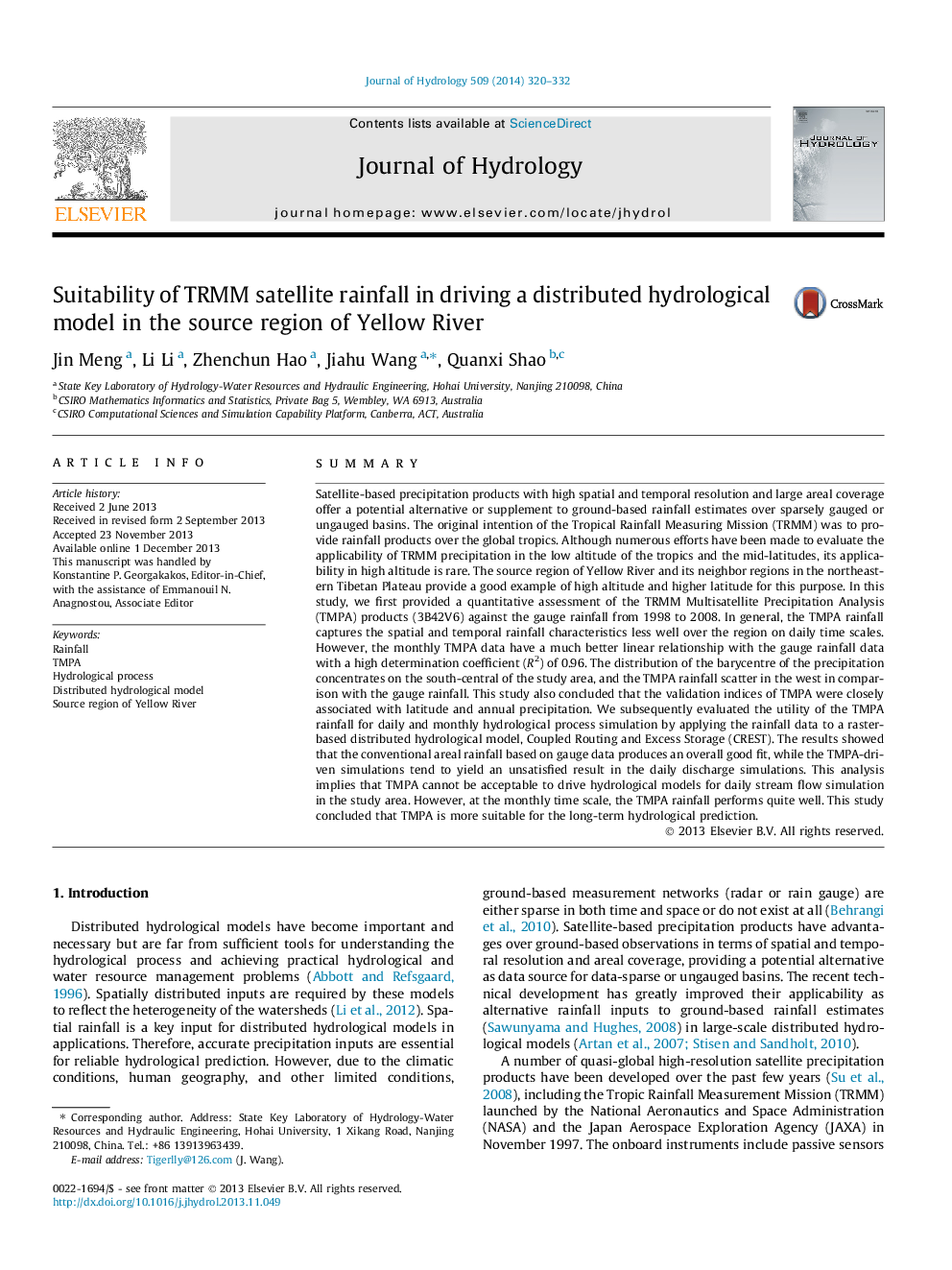| Article ID | Journal | Published Year | Pages | File Type |
|---|---|---|---|---|
| 6413427 | Journal of Hydrology | 2014 | 13 Pages |
â¢This study evaluated the performance of TMPA in a typical alpine zone.â¢The validation indices of TMPA were associated with latitude and annual rainfall.â¢This study provides some insight into the applicability of TMPA rainfall product.â¢TMPA cannot be acceptable for daily stream flow simulation in the study area.â¢TMPA is more suitable for the long-term hydrological forecast.
SummarySatellite-based precipitation products with high spatial and temporal resolution and large areal coverage offer a potential alternative or supplement to ground-based rainfall estimates over sparsely gauged or ungauged basins. The original intention of the Tropical Rainfall Measuring Mission (TRMM) was to provide rainfall products over the global tropics. Although numerous efforts have been made to evaluate the applicability of TRMM precipitation in the low altitude of the tropics and the mid-latitudes, its applicability in high altitude is rare. The source region of Yellow River and its neighbor regions in the northeastern Tibetan Plateau provide a good example of high altitude and higher latitude for this purpose. In this study, we first provided a quantitative assessment of the TRMM Multisatellite Precipitation Analysis (TMPA) products (3B42V6) against the gauge rainfall from 1998 to 2008. In general, the TMPA rainfall captures the spatial and temporal rainfall characteristics less well over the region on daily time scales. However, the monthly TMPA data have a much better linear relationship with the gauge rainfall data with a high determination coefficient (R2) of 0.96. The distribution of the barycentre of the precipitation concentrates on the south-central of the study area, and the TMPA rainfall scatter in the west in comparison with the gauge rainfall. This study also concluded that the validation indices of TMPA were closely associated with latitude and annual precipitation. We subsequently evaluated the utility of the TMPA rainfall for daily and monthly hydrological process simulation by applying the rainfall data to a raster-based distributed hydrological model, Coupled Routing and Excess Storage (CREST). The results showed that the conventional areal rainfall based on gauge data produces an overall good fit, while the TMPA-driven simulations tend to yield an unsatisfied result in the daily discharge simulations. This analysis implies that TMPA cannot be acceptable to drive hydrological models for daily stream flow simulation in the study area. However, at the monthly time scale, the TMPA rainfall performs quite well. This study concluded that TMPA is more suitable for the long-term hydrological prediction.
